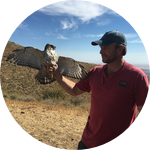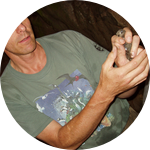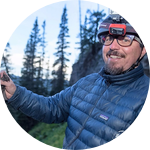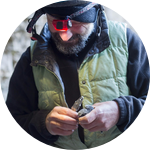Project Results
I am excited to share some results from our Black Swift Movement Ecology project via a blog post we wrote. https://birdconservancy.org/bl...
Thanks for all your support!
About This Project
The Black Swift, a species of continental concern in the U.S and Canada, has declined by 94% over the past 60 years.
Black Swifts forage on aerial plankton (tiny lifeforms that drift through the air), however, there is no information on the distance covered from their nest sites or their foraging habitat relationships during their breeding or wintering seasons. By placing GPS tags on birds, we will be able to answer some fundamental movement ecology questions.
Ask the Scientists
Join The DiscussionWhat is the context of this research?
The Black Swift (Cypseloides niger borealis) is one of the least understood bird species in North America due to remote nest site locations in wet coastal caves or on ledges near waterfalls. The Black Swift, a species of Continental Concern in the U.S and Canada, has declined by 94% over the past 60 years.
The northern Black Swift breeds from coastal western states and the Rocky Mountains up into Canada. The wintering grounds and migration route for the Black Swift was unknown until we tracked three using geolocators to the lowland rainforest of Brazil showing an approximate wintering range. Foraging distance and precise wintering locations remain unknown.
What is the significance of this project?
Black Swifts forage on aerial plankton (tiny lifeforms that drift through the air), however, there is no information on the distance covered from their nest sites or their foraging habitat relationships during their breeding or wintering seasons. By placing GPS tags on Black Swifts, we hope to answer these fundamental movement ecology questions. During the wintering season we will also investigate whether this species sleeps on the wing similar to Common Swifts (Apus apus) of Europe. By determining whether they sleep on the wing or not will have important implications on how to conserve this species on their wintering grounds. The answers to these questions would be new to science and instrumental to the conservation of this species.
What are the goals of the project?
We plan to deploy five GPS Pin-point tags in 2017, that will record precise locations over a one-year period. We plan on deploying GPS tags during the breeding season from known nest site locations in Colorado and New Mexico. We will schedule the GPS tags to record data at regular intervals and analyze the data using state of the art methods. We will use Hidden Markov models to model foraging and migration movements. These models are flexible and allow us to quantify movement uncertainty.
Budget
These budget items will help us reach our funding goal and are essential for a successful project. The field work will cover the cost for our team to attach the gps tags and download the data. The analysis cost will quantify and show the breeding, migration and wintering movement results. The gps equipment cost will be used to purchase gps tags and the hardware needed to download the data.
Endorsed by
Meet the Team
Affiliates
Team Bio
Our team at the Bird Conservancy of the Rockies has lead Black Swift research in the western U.S. In 2012, we were part of the team that discovered the previously unknown migratory route and wintering range for this species. As a result, we received a Wings Across the Americas Award for research management and partnership from the USDA. Our team brings decades of bird research experience and has the skills necessary to answer fundamental movement ecology questions of this species
Rob Sparks
My deep appreciation for the natural world started early in life growing up in the forests of Africa and South America. I have worked on bird monitoring and more recently movement ecology projects for 14 years. I have presented my work at many North American Ornithological Council meetings focusing on avian habitat use and distribution using hierarchical abundance and occupancy models. I am interested in understanding what factors influence species movement ecology and distribution. I analyzed the Black Swift geolocator dataset revealing the general migratory path and wintering locations which were previously unknown. In the field I have conducted hundreds of points counts, assisted with banding Black Swifts and discovered a new Black Swift nest site in western Colorado.
Jason Beason
I have worked with Black Swifts throughout the western United States since 2001 for the Bird Conservancy of the Rockies. During this time I have co-authored three manuscripts focusing on Black Swift research in the Wilson Journal of Ornithology. A highlight of our research was when the results of a 2012 manuscript were accepted by the Brazilian Committee on Ornithological Registers as confirmation that Black Swifts occupy Brazil and the species was added to the official bird list for that country.
Project Backers
- 47Backers
- 100%Funded
- $6,031Total Donations
- $128.32Average Donation



